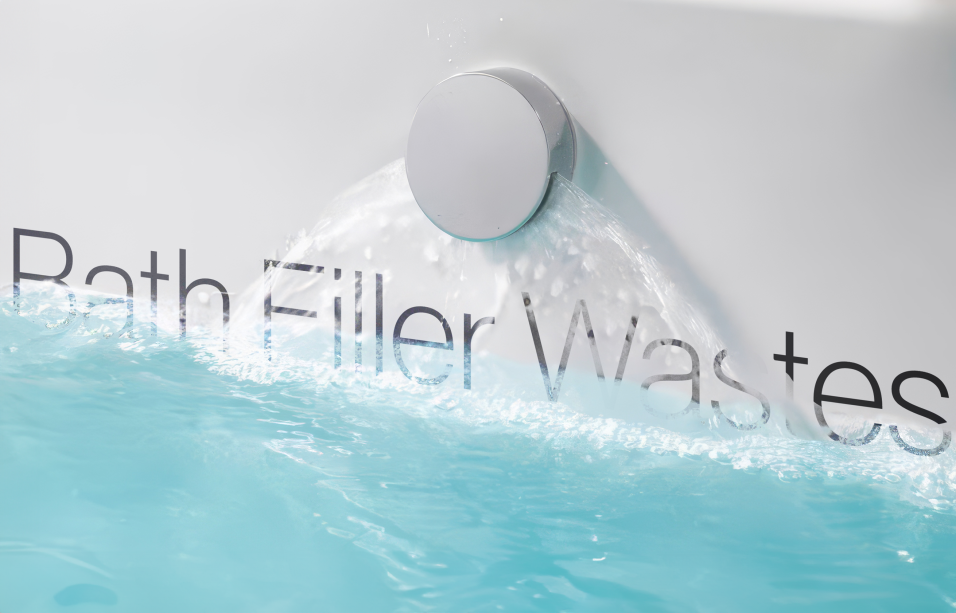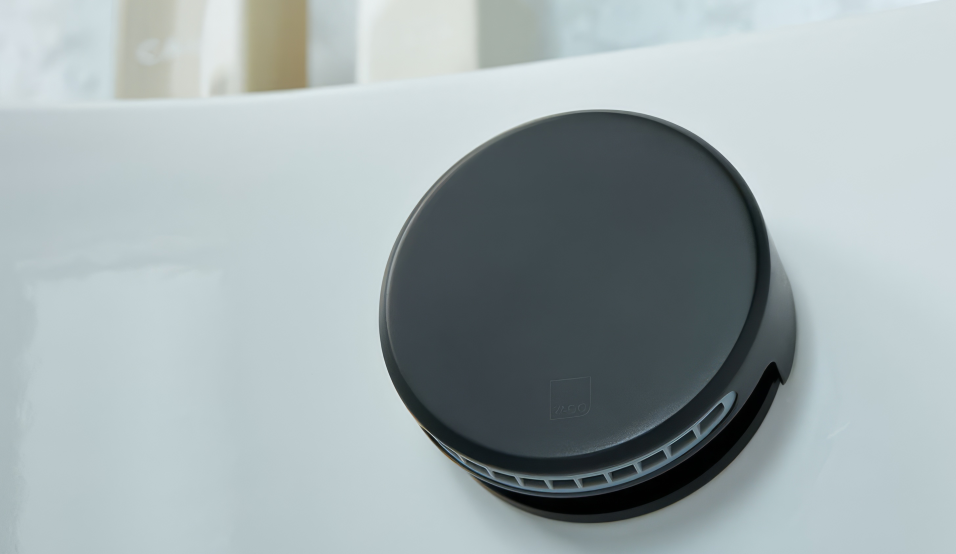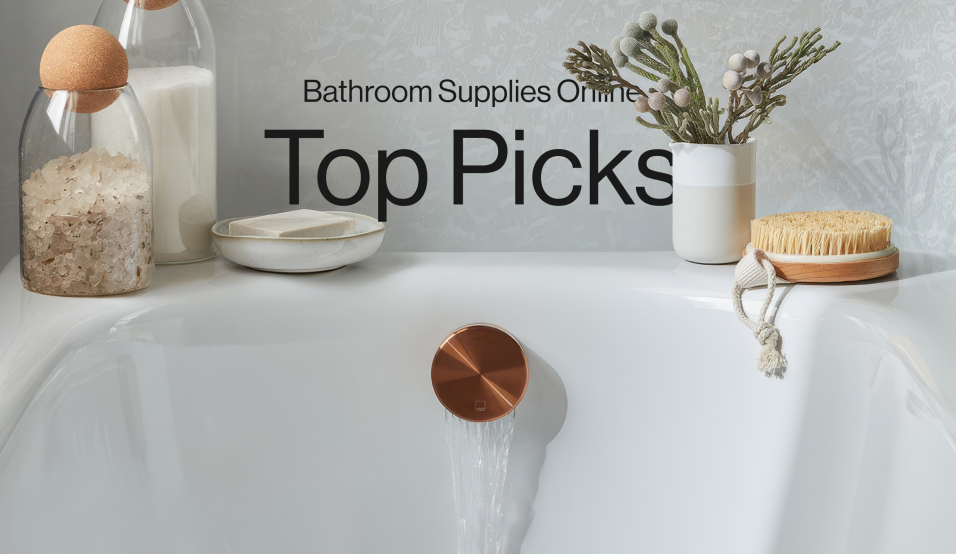| Tags | walk-in bath bath easy riser montana priya tray sizes anti-slip shower tray sizes shower tray freestanding baths geberit aquaclean aquaclean carron corner bath carron baths show all posts |
Bath Filler Wastes Explained: How They Work & Which One to Choose
When people hear the term bath filler waste, it's not always clear what it actually means. That's why we get so many calls and live chats from customers confused about what they do, how they work, and whether they need one.
If that sounds familiar, don't worry—you're not alone. Bath filler wastes aren't something most people think about until they're in the middle of a bathroom renovation or replacing an old bath. This guide is here to clear things up, explain how they work, and help you decide if one is right for your bathroom.
What Is a Bath Filler Waste?
A bath filler waste is basically a two-in-one solution. It acts as both the waste (the part that lets water drain from your bath) and the filler (the part that fills your bath with water). Instead of having a separate set of taps, the water comes through the overflow hole—yes, the same one that stops your bath from overflowing. This means you don't need visible taps on the bath itself, giving a cleaner, more modern look.
It's an increasingly popular choice for those who want a minimalist design, as it removes the need for bulky bath taps. It also makes cleaning easier, as there are fewer parts for grime to collect around.
How Do Bath Filler Wastes Work?
The way they work is quite simple. You control the water flow using a separate valve—this could be a manual mixer valve, a thermostatic valve, or a digital control, depending on what setup you have. When the valve is turned on, the water flows through the filler and into the bath via the overflow opening.
At the same time, the waste part functions like a normal bath waste, allowing you to drain the water when you're done. Some use a twist mechanism, some have a push-button pop-up waste, and others have a click-clack system (push once to close, push again to open).
The key advantage of this setup is that it keeps things neat. There's no need for traditional taps, which means less visual clutter around your bath. It's also great for freestanding baths where you might not want exposed pipework ruining the look.
Why Do People Choose Bath Filler Wastes?
A lot of people go for a bath filler waste because they want a sleeker, more modern look in their bathroom. They're also really practical—you won't be knocking your knees on taps while getting in and out of the bath, and they make cleaning simpler.
Another big plus is temperature control. If you pair one with a thermostatic valve, you can set a consistent water temperature, reducing the risk of scalding or freezing cold surprises. It's a small upgrade that makes a big difference in everyday use.
Types of Bath Filler Wastes – Which One's Right for You?
Now that you know what a bath filler waste is and how it works, the next question is: which type should you go for? There are a few different options, and while they all do the same basic job, the way they operate and look can vary quite a bit.
1. Pop-Up Bath Filler Waste
A pop-up waste has a small dial or lever that you turn to open and close the drain. This is usually located near the overflow, making it easy to use. It's a great choice if you want something simple, but still modern, without any fiddly parts sticking out.
2. Click-Clack (Push Button) Bath Filler Waste
This is one of the most popular choices. It works with a simple push mechanism—press once to seal the waste and fill the bath, press again to drain the water. There's no need to twist or turn anything, making it a good option for people who prefer a more effortless design. The only thing to keep in mind is that, over time, the mechanism might need cleaning or replacing if it gets clogged with limescale or debris.
3. Twist-Operated Bath Filler Waste
This type works with a turning motion, usually controlled by a knob near the overflow. When twisted one way, it opens the waste to let water drain. Twisting it the other way seals the waste so you can fill the bath. It's a durable, easy-to-use system that doesn't require much maintenance.
4. Freeflow Bath Filler Waste
A freeflow filler waste is always open, meaning water constantly drains out unless you have a separate plug. This is usually used in commercial or high-use settings where overflowing needs to be avoided. Not the best option for home bathrooms, but worth mentioning if you ever come across it.
Benefits of Using a Bath Filler Waste Instead of Traditional Taps
So why choose a bath filler waste over traditional taps? There are a few solid reasons why people make the switch:
- Sleeker Look – No bulky taps sticking out, just a neat, clean finish. This is especially great for freestanding baths, where visible pipework can ruin the aesthetic.
- Easier Cleaning – With fewer exposed parts, there's less chance for limescale, soap scum, and grime to build up. That means less scrubbing and more time enjoying your bath.
- Better Temperature Control – Pairing a bath filler waste with a thermostatic valve allows you to set a steady water temperature, so you don't have to constantly adjust hot and cold taps.
- Safer for Families – Because there are no protruding taps, there's less risk of kids (or adults) bumping into them when getting in and out of the bath.
- Space-Saving – If you have a smaller bathroom, getting rid of traditional taps can free up some valuable space, making the area feel less cluttered.
Bath filler wastes aren't just a style choice—they're practical, too. Whether you're after a sleek, modern look or just want to make bath time easier, they're definitely worth considering.
Common Questions About Bath Filler Wastes
Because bath filler wastes aren't as common as standard taps, people often have a lot of questions about how they work, how to install them, and whether they're worth it. Here are some of the most common ones we get asked.
1. Do I need a separate valve for a bath filler waste?
Yes. Unlike traditional taps that have separate hot and cold controls built in, a bath filler waste needs a valve to regulate the water temperature and flow. This can be a manual mixer valve, a thermostatic valve, or even a digital control. The valve is usually wall-mounted or hidden within a concealed system.
2. Can I install a bath filler waste in any bath?
Most standard baths can be fitted with a bath filler waste, but you'll need to check that your bath has a compatible overflow hole. If you're not sure, check the specifications or ask an expert before buying.
3. How do I install a bath filler waste?
Installation is similar to fitting a standard bath waste but with an extra step for connecting the filler function. You'll need:
- A compatible bath with an overflow hole
- A separate valve to control water temperature and flow
- Pipework to connect the filler to your water supply
The process involves securing the filler waste unit to the bath, connecting the pipes, and ensuring there are no leaks before sealing everything in place. If you're not comfortable doing it yourself, it's best to get a plumber involved.
4. Can I use a bath filler waste with low water pressure?
This depends on the model. Some bath filler wastes work fine with lower pressure systems, but others require high water pressure to function properly. If you have low water pressure, look for one specifically designed for it, or consider a pump to boost the flow.
5. How do I clean and maintain a bath filler waste?
Regular maintenance is pretty simple:
- Wipe down the overflow and filler regularly to prevent soap scum and limescale buildup.
- Descale the waste mechanism if you live in a hard water area—just like with taps, limescale can cause blockages over time.
- Check for leaks every so often, especially if you notice water draining slower than usual.
6. Are bath filler wastes safe for families with kids?
Yes, and in some ways, they're actually safer than traditional taps. With no protruding spout, there's nothing to bump into, and when paired with a thermostatic valve, they help prevent sudden temperature changes, reducing the risk of scalding.
Our Top Bath Filler Waste Recommendations
Now that you know how they work and what to look for, let's talk about the ones we actually recommend.
1. Vado Bath Filler Wastes – Our Top Pick
If you want something reliable, well-made, and affordable, Vado is the brand to go for. These are solid brass with high-quality finishes, meaning they'll last for years without tarnishing or breaking. They also come in a range of finishes, so whether you want classic chrome or something more modern like brushed black or brass, there's an option for you.
Vado bath filler wastes are also designed and manufactured in Britain, so you know you're getting a product built to last. They're easy to install, work with most bath setups, and offer smooth operation with minimal maintenance. That's why we rate them as our number one choice.
2. Geberit Bath Filler Wastes – A Step Up in Quality
Geberit is a premium brand, and their bath filler wastes reflect that. They're engineered for smooth operation and long-term durability, making them ideal if you're looking for something a bit more high-end.
One of the key selling points of Geberit bath filler wastes is their advanced waste control. Many models come with a turn-control pop-up mechanism, which makes draining the bath effortless. If you're willing to invest a bit more in quality, Geberit is a great choice.
3. Villeroy & Boch Bath Filler Wastes – The Luxury Option
If you're after top-tier quality and design, Villeroy & Boch filler wastes are worth considering. These are on the pricier end, but they offer sleek aesthetics and high-end materials that elevate the look of your bathroom.
Villeroy & Boch products are known for their durability and precision engineering, so if you're putting together a luxury bathroom and want everything to match in style and quality, these are a great pick.
Installation and Maintenance Tips
If you're thinking about installing a bath filler waste, it's important to know what you're getting into. While they aren't overly complicated, they do require a bit more planning than a standard bath tap setup. Here's what you need to know before getting started.
How to Install a Bath Filler Waste
You've got two choices: DIY or getting a professional to do it. If you're confident with plumbing, it's doable yourself, but if you're not 100% sure, it's best to leave it to an expert—especially since a leak in your bath waste can cause a serious headache down the line.
What You'll Need:
- A compatible bath with an overflow hole
- A bath filler waste unit
- A separate valve to control the water temperature and flow
- Pipework to connect the filler to your hot and cold water supply
- Sealant and plumbing tape to prevent leaks
Keeping Your Bath Filler Waste in Good Condition
Like any bathroom fitting, bath filler wastes need a little upkeep to stay in top shape. The good news is, they're low maintenance—just follow these tips to keep yours working smoothly.
1. Clean the Overflow and Filler Regularly
Over time, soap scum and limescale can build up around the filler. A quick wipe with a damp cloth after each use will keep it looking fresh. For tougher limescale, a white vinegar soak can help break it down without damaging the finish.
2. Descale the Waste Mechanism
If you live in a hard water area, limescale can cause the waste mechanism to stiffen up. Use a descaler every few months to keep it moving freely. If the waste gets stuck, don't force it—check for debris and clean it out first.
3. Check for Leaks Occasionally
It's rare, but seals and fittings can loosen over time. If you notice any slow leaks or pooling water near your bath, it's best to deal with it sooner rather than later.
4. Test the Drain Speed
If your bath is draining more slowly than usual, it could be a sign of buildup in the waste pipe. Try using a mild drain cleaner or a plunger to clear it before it becomes a bigger problem.







